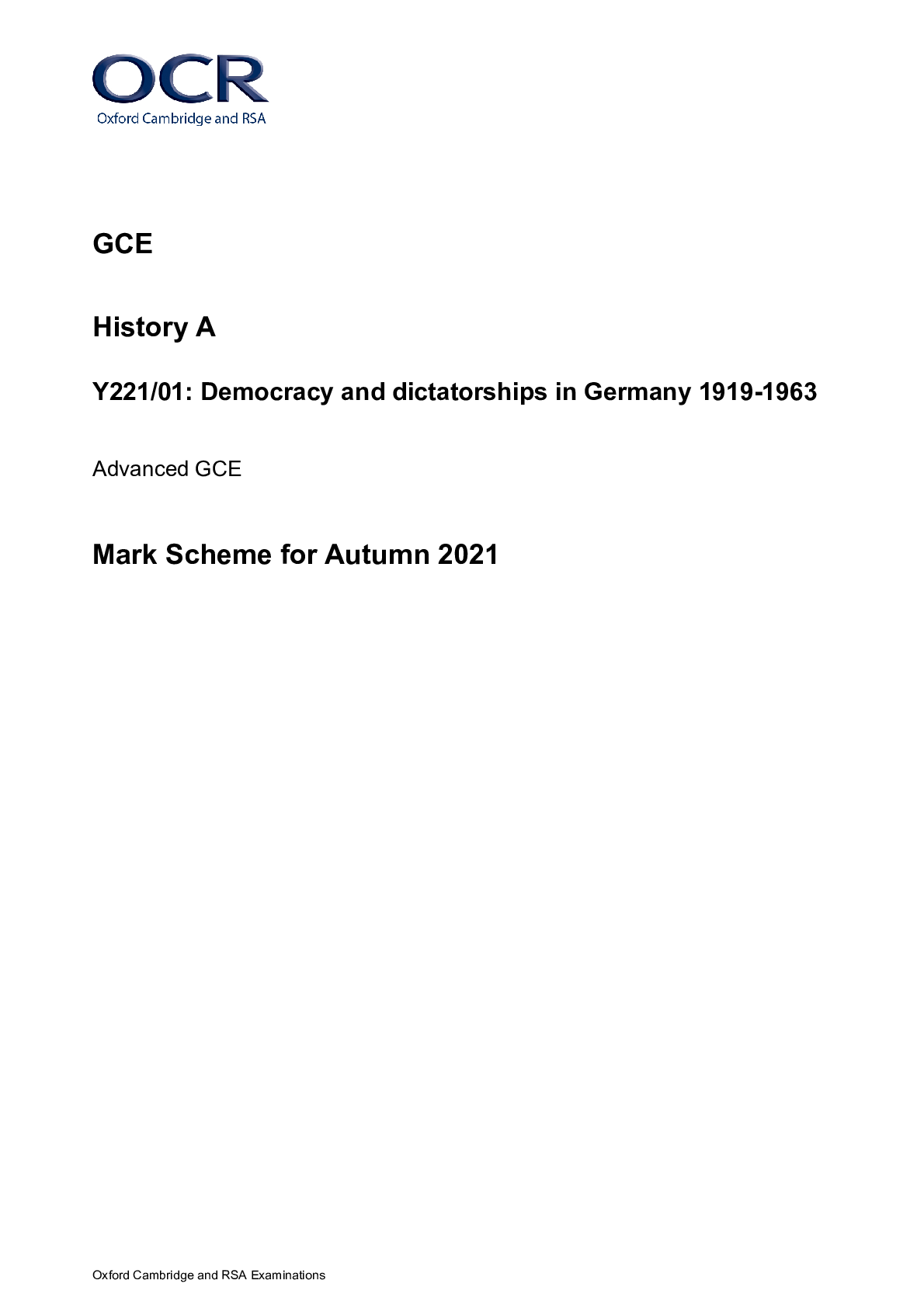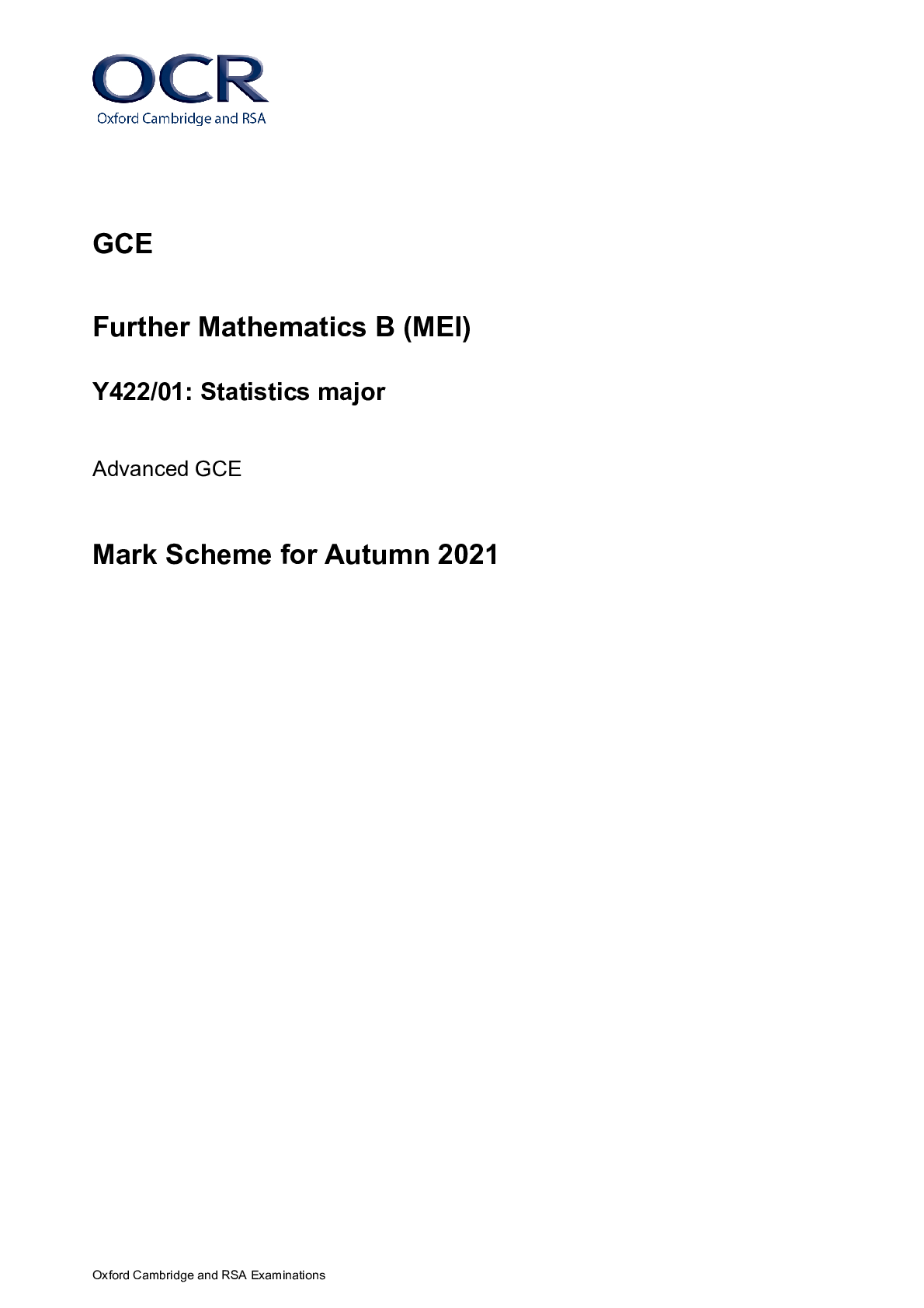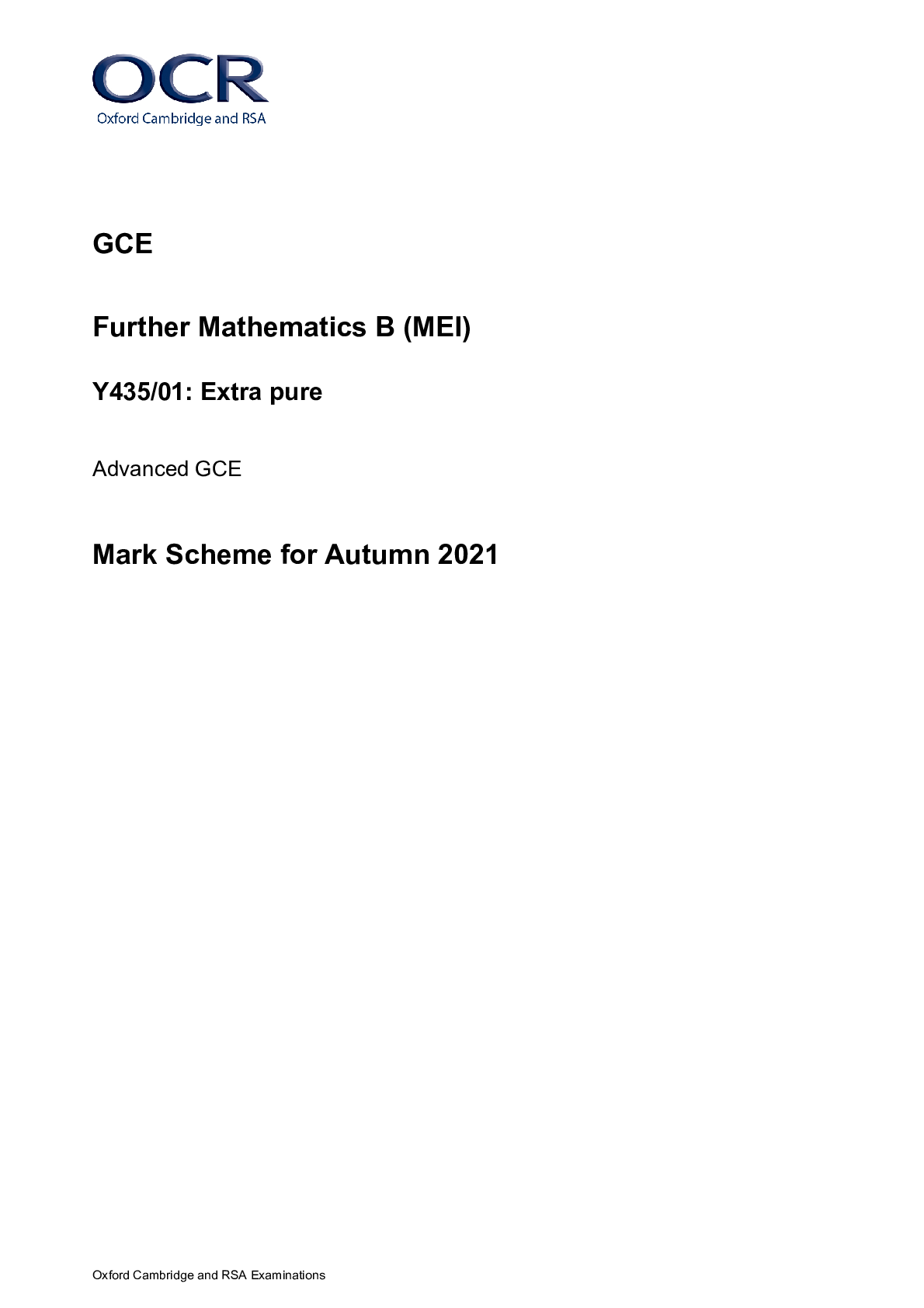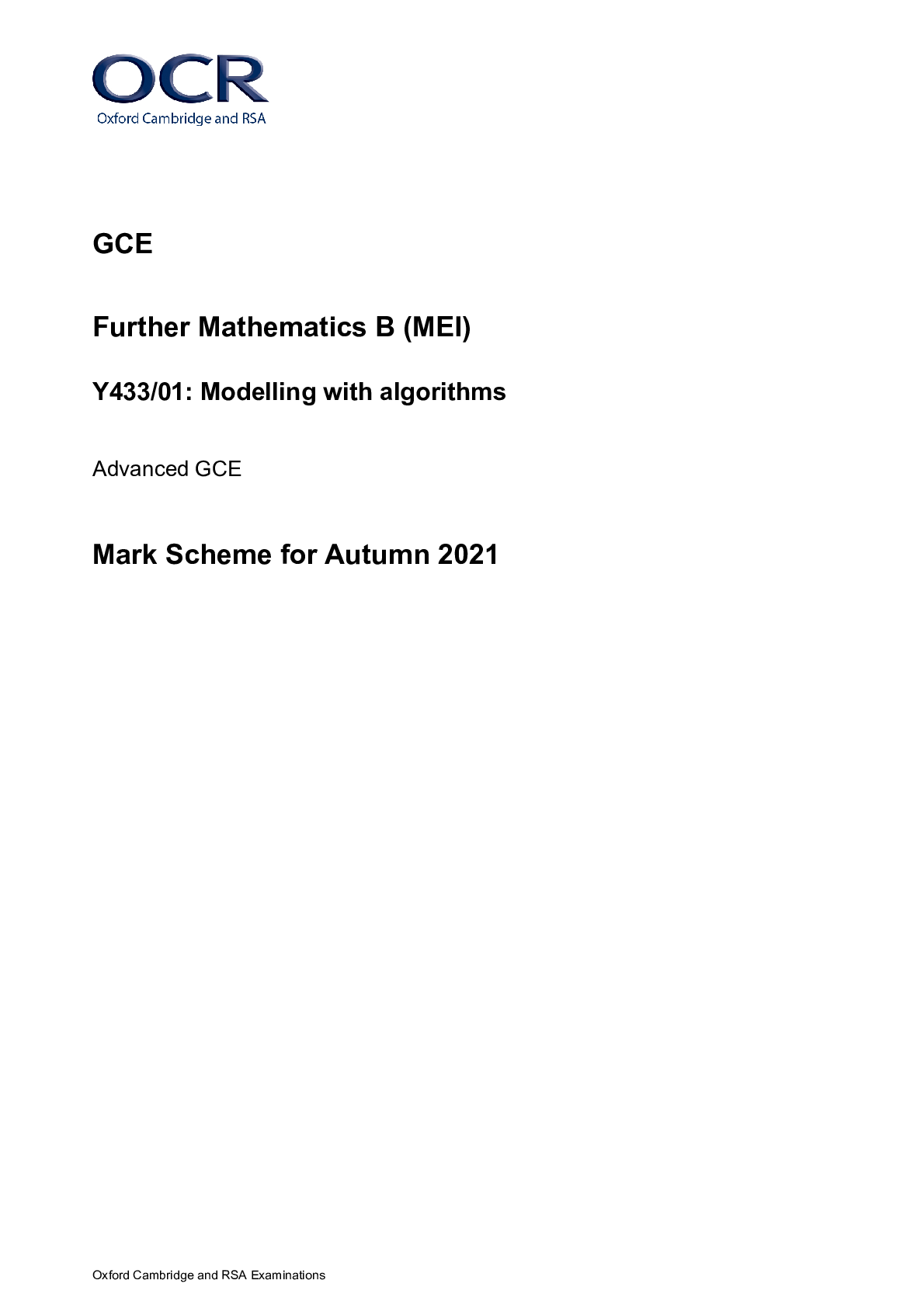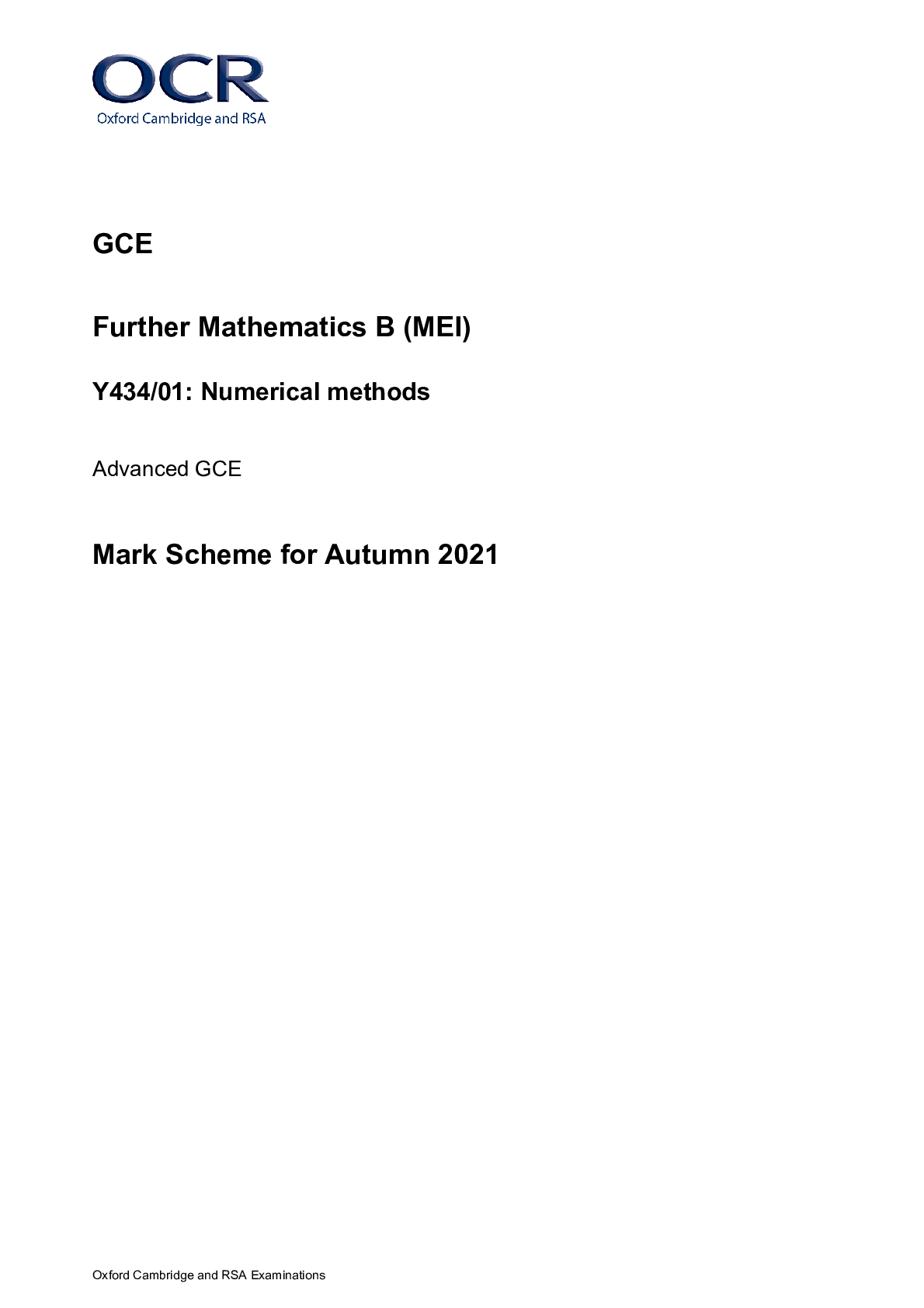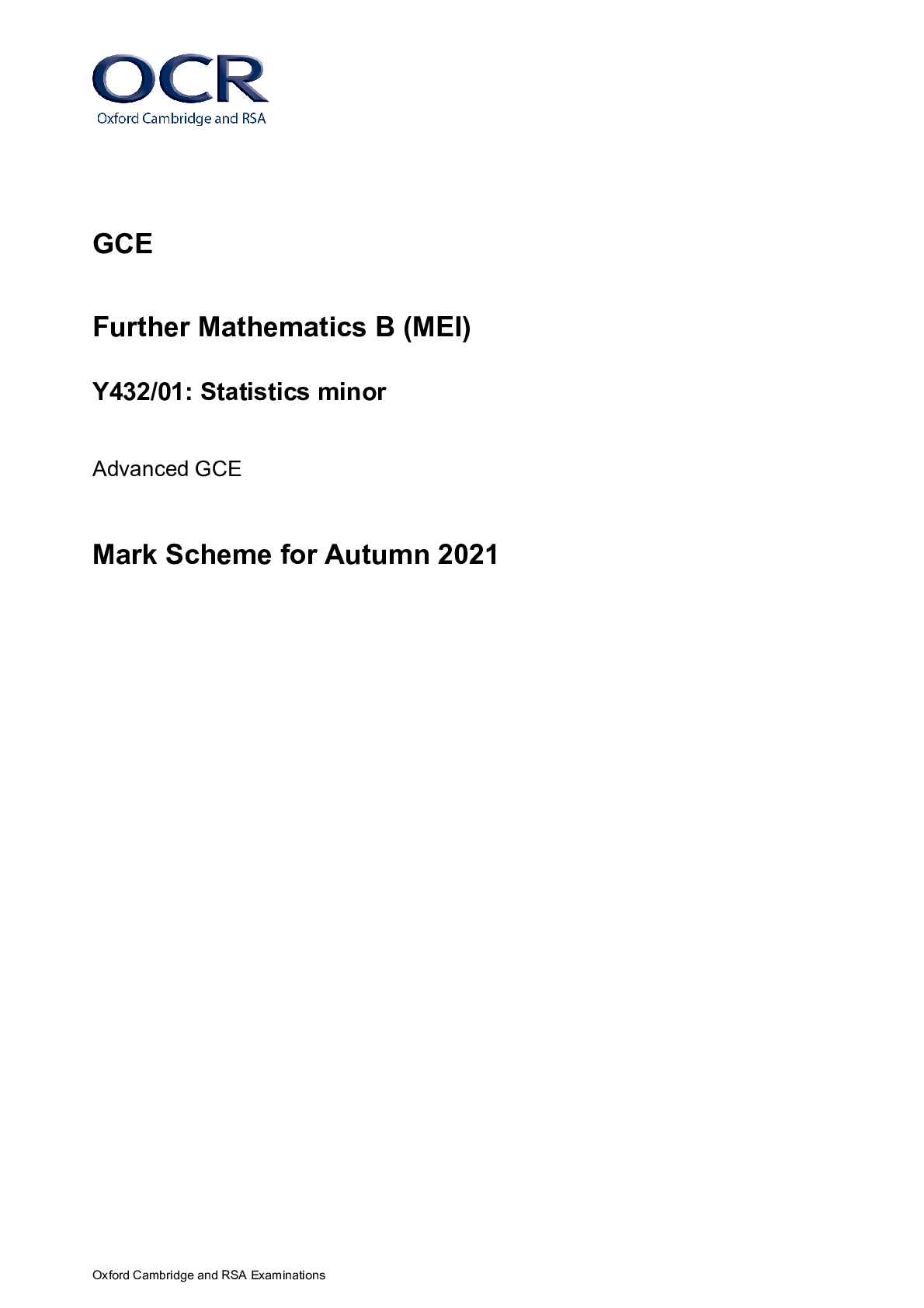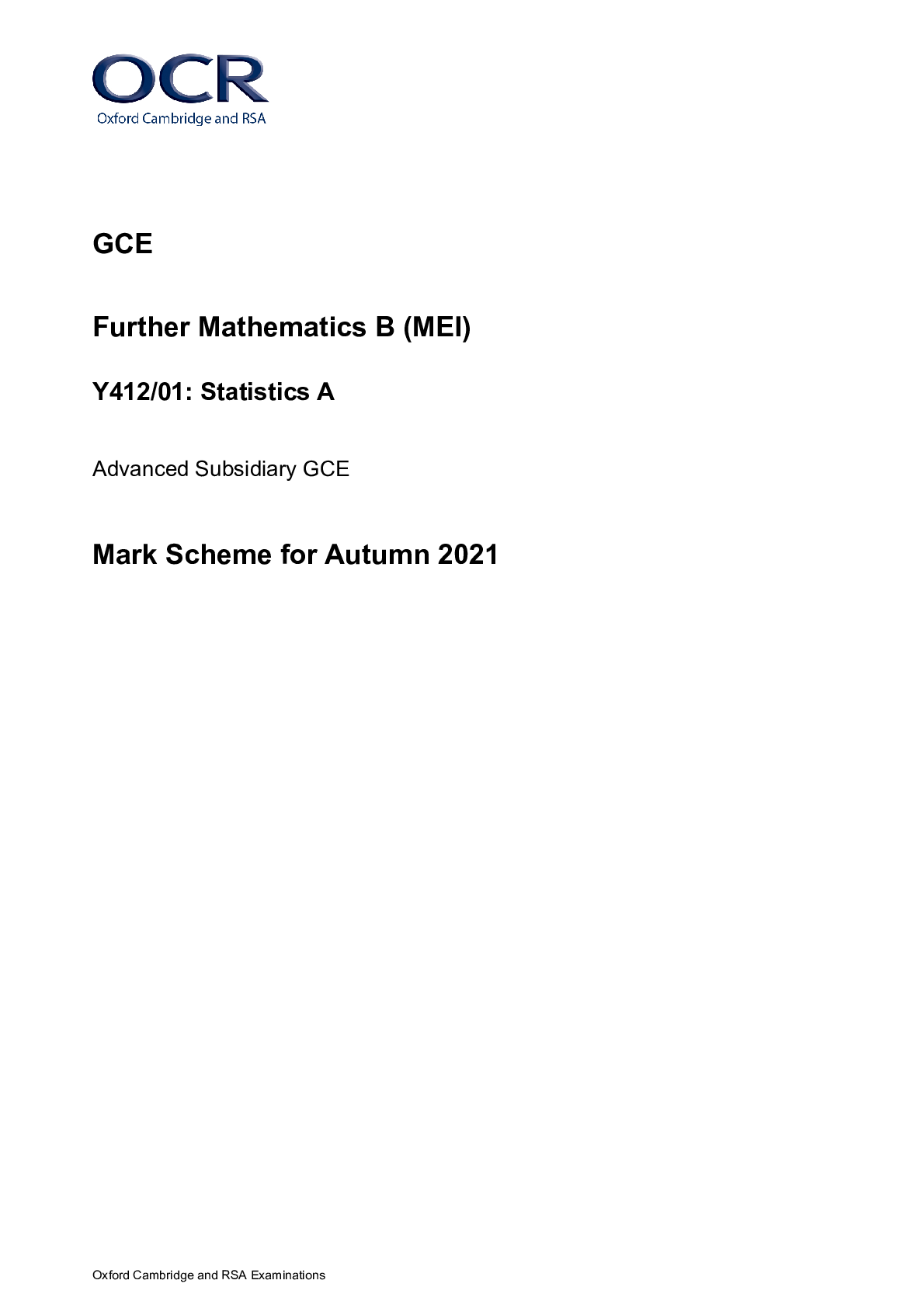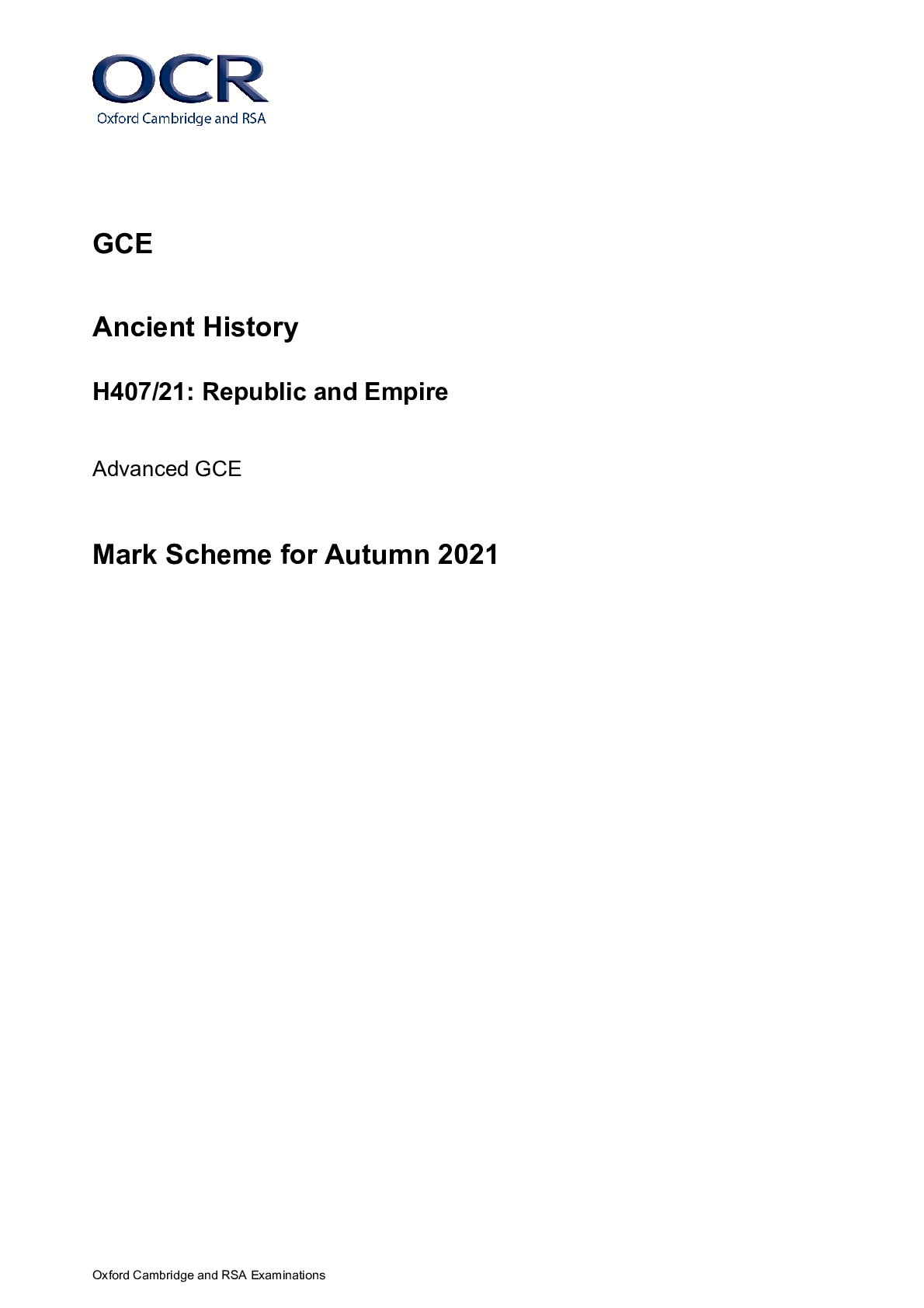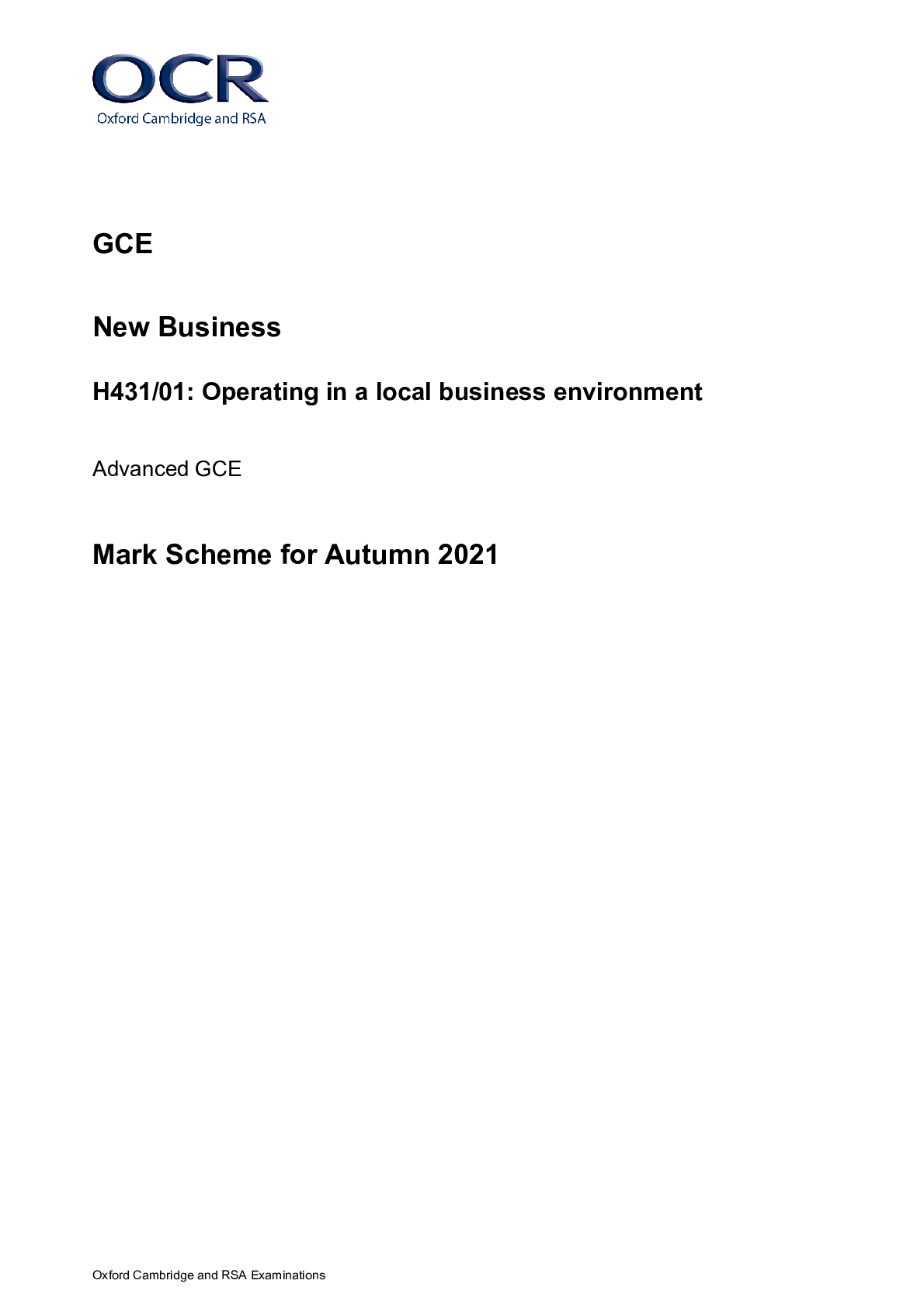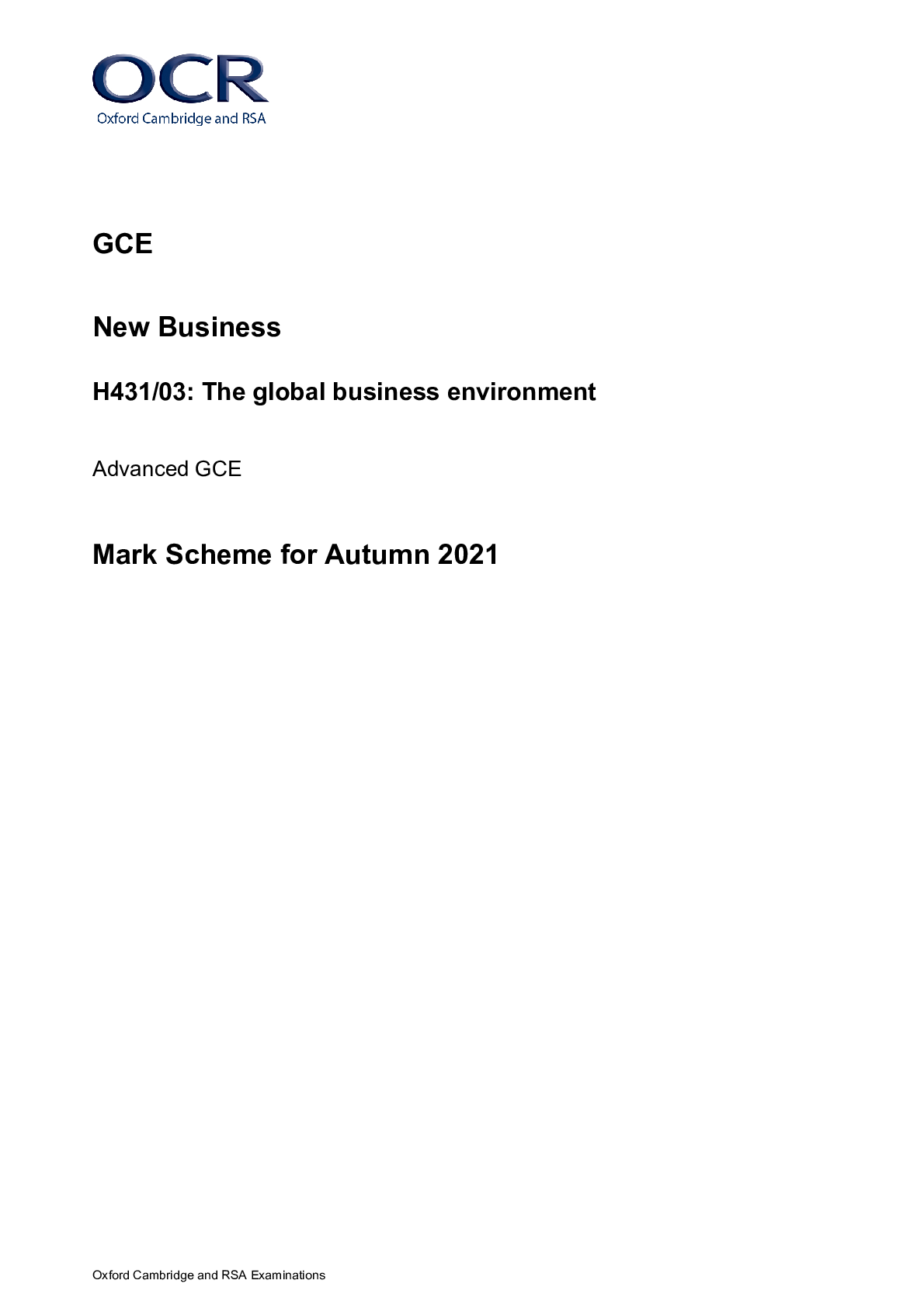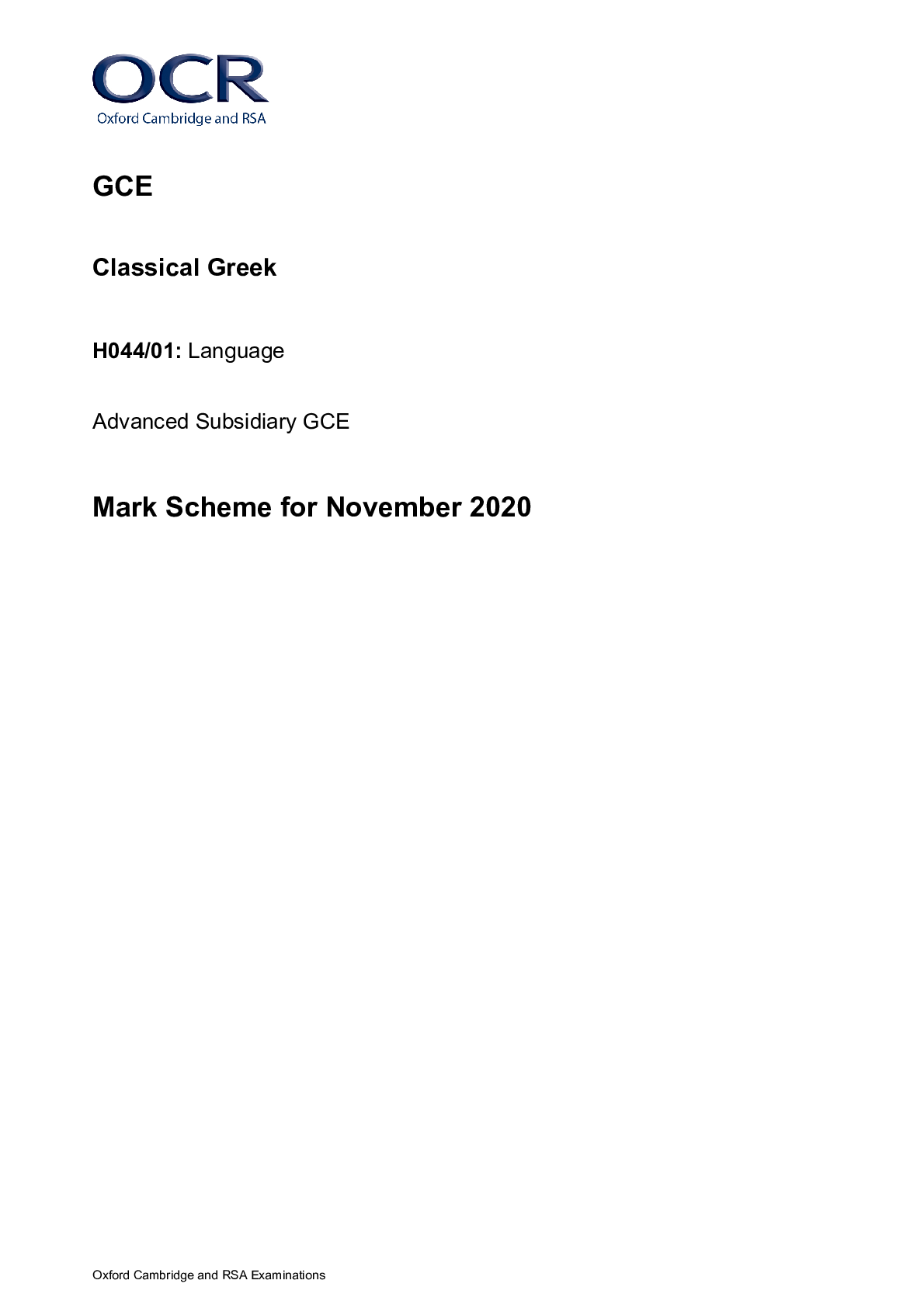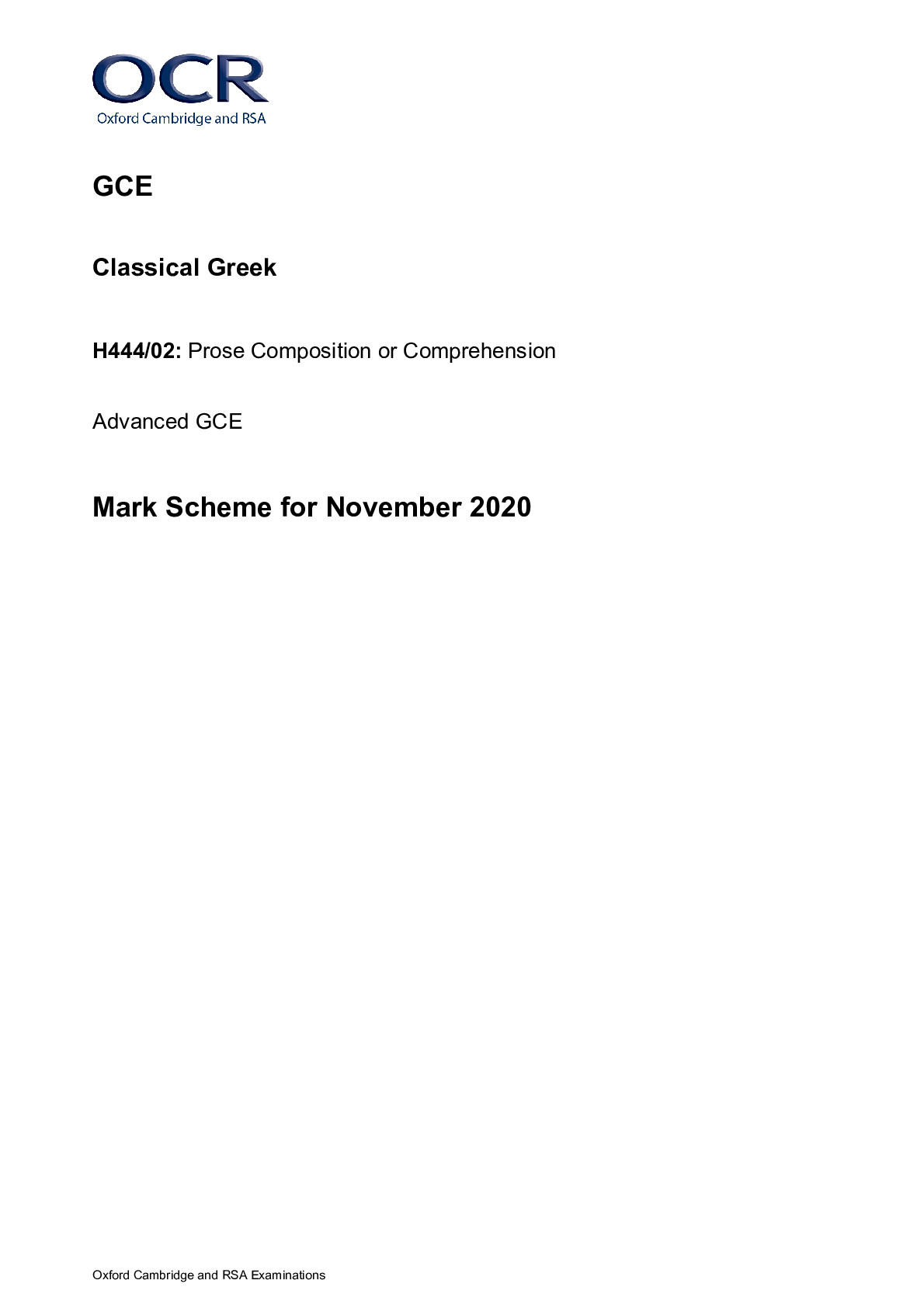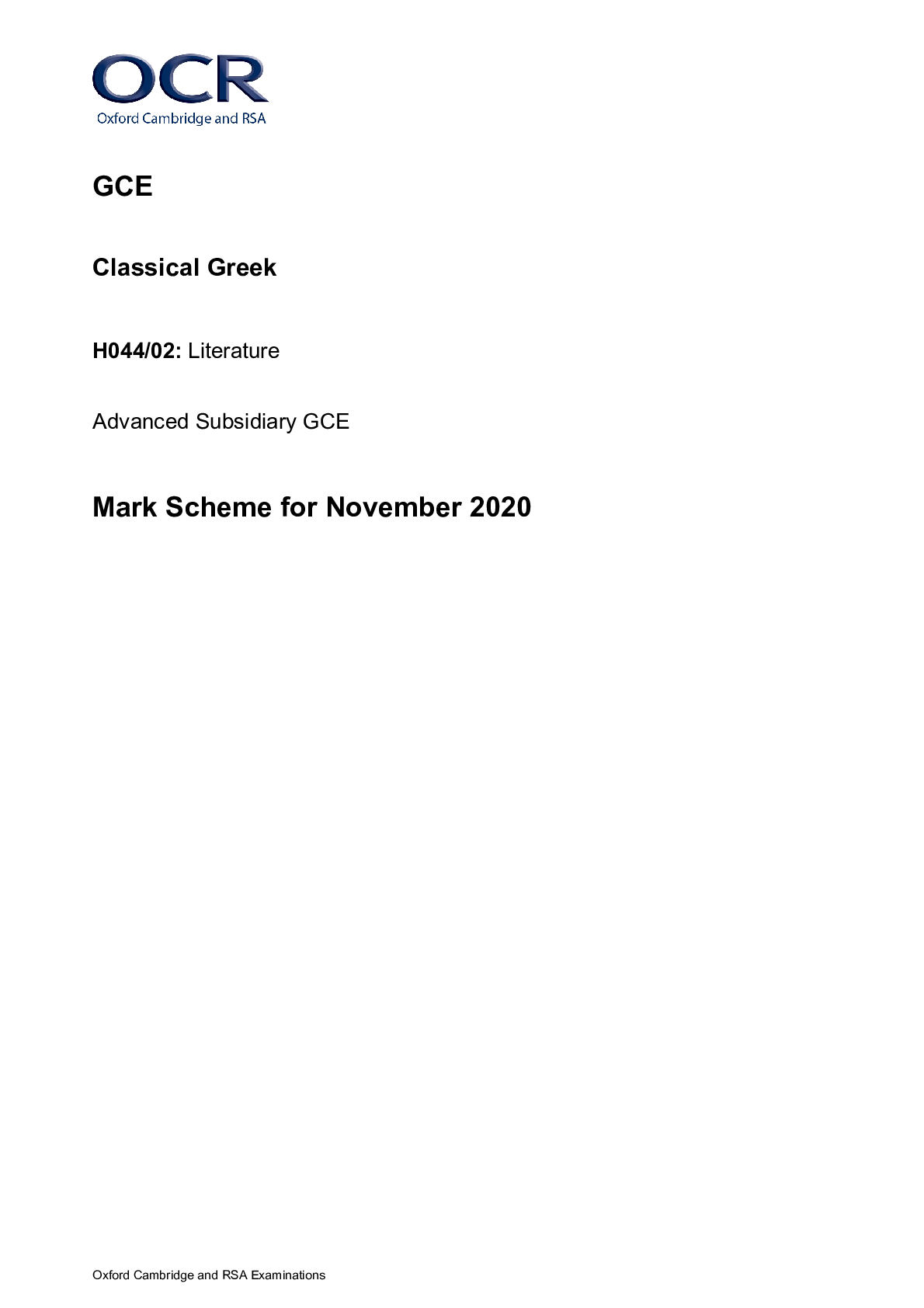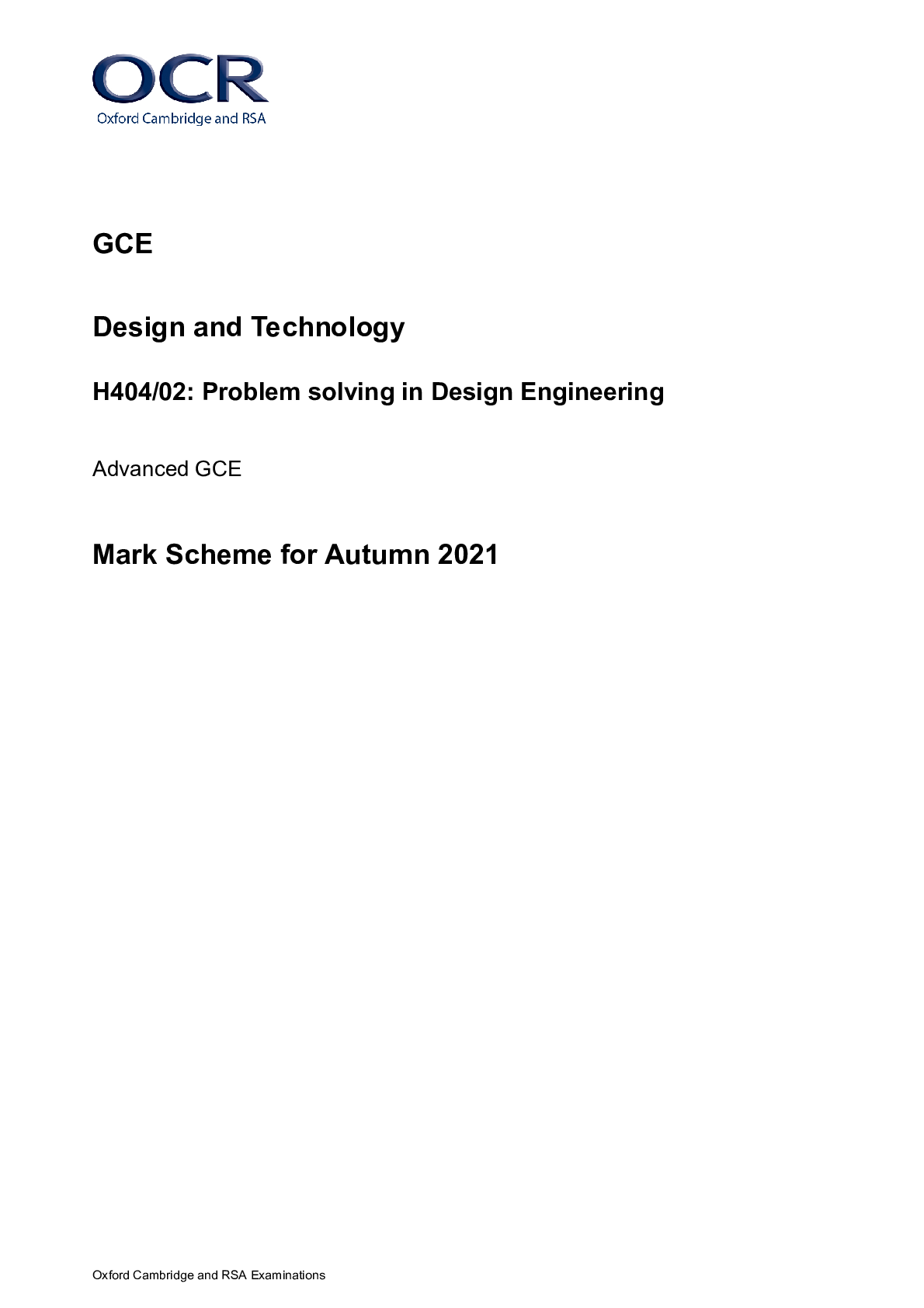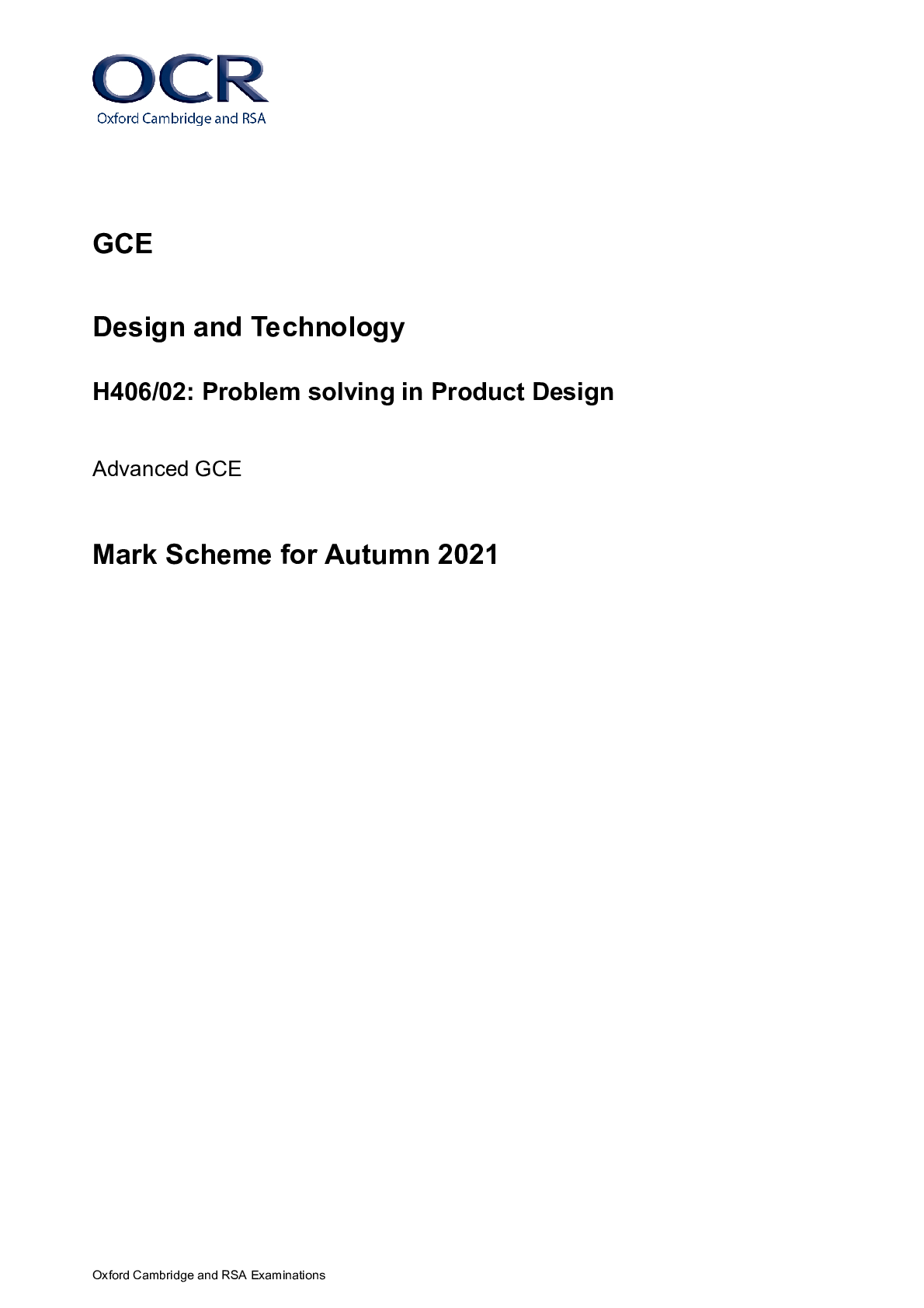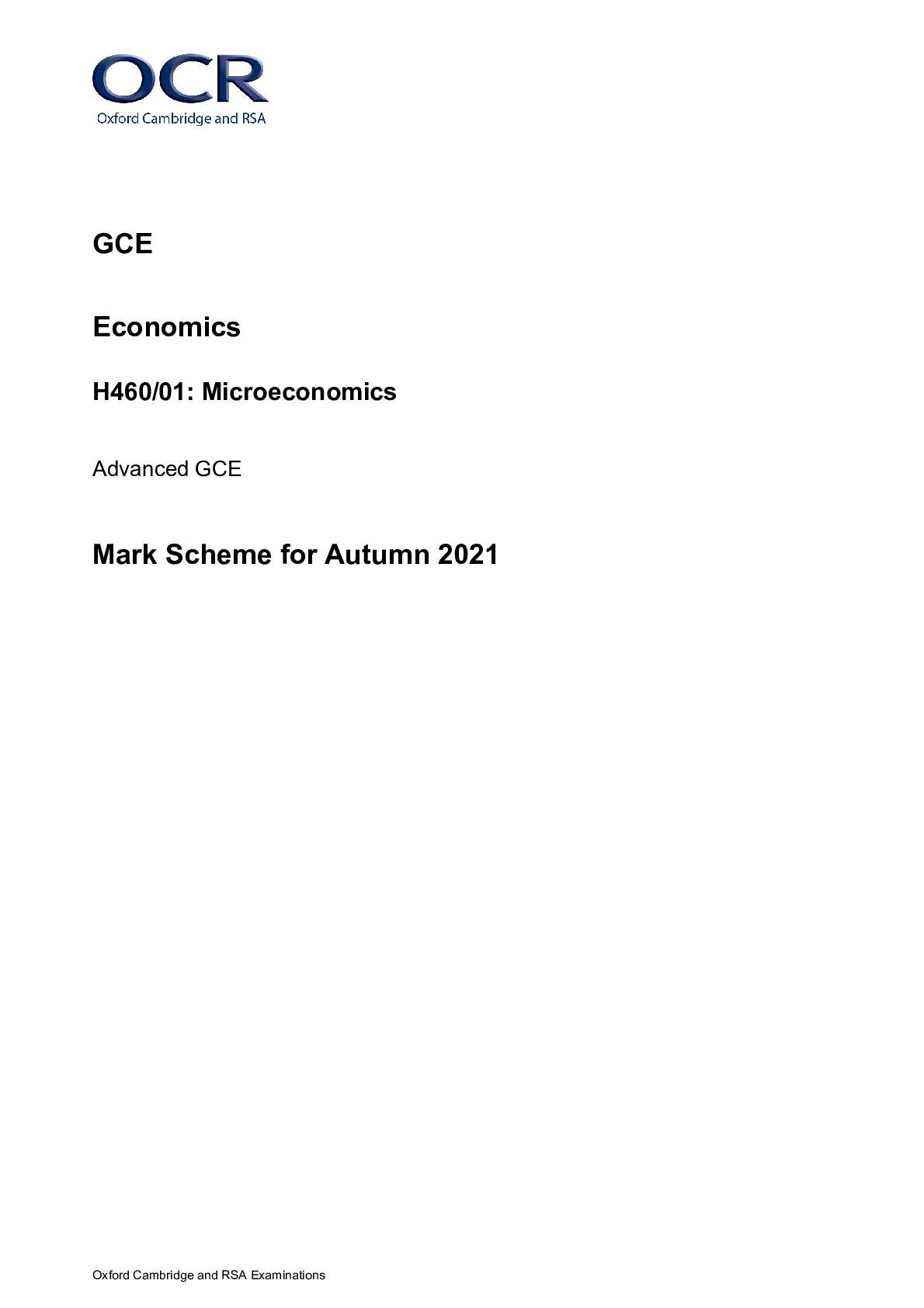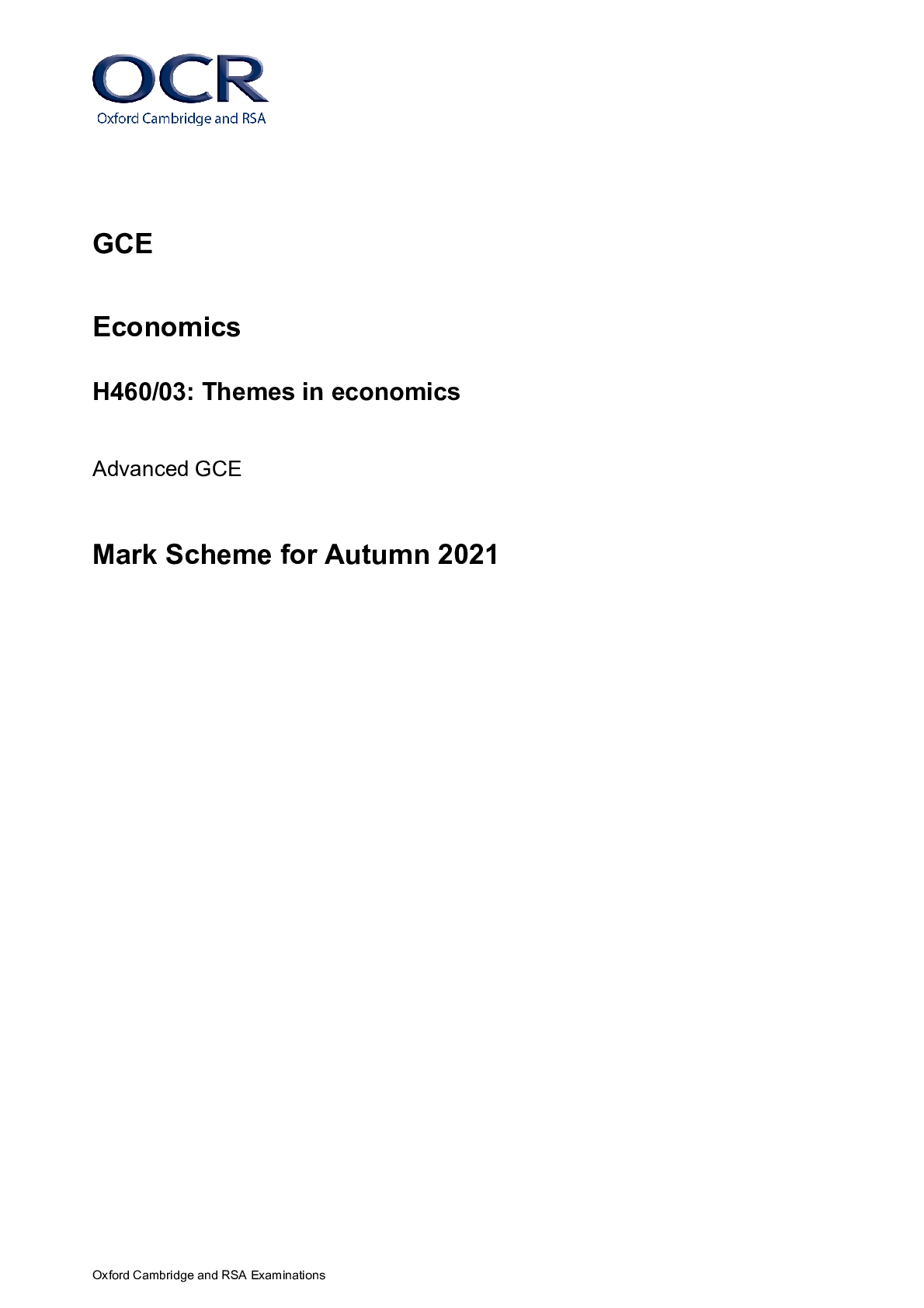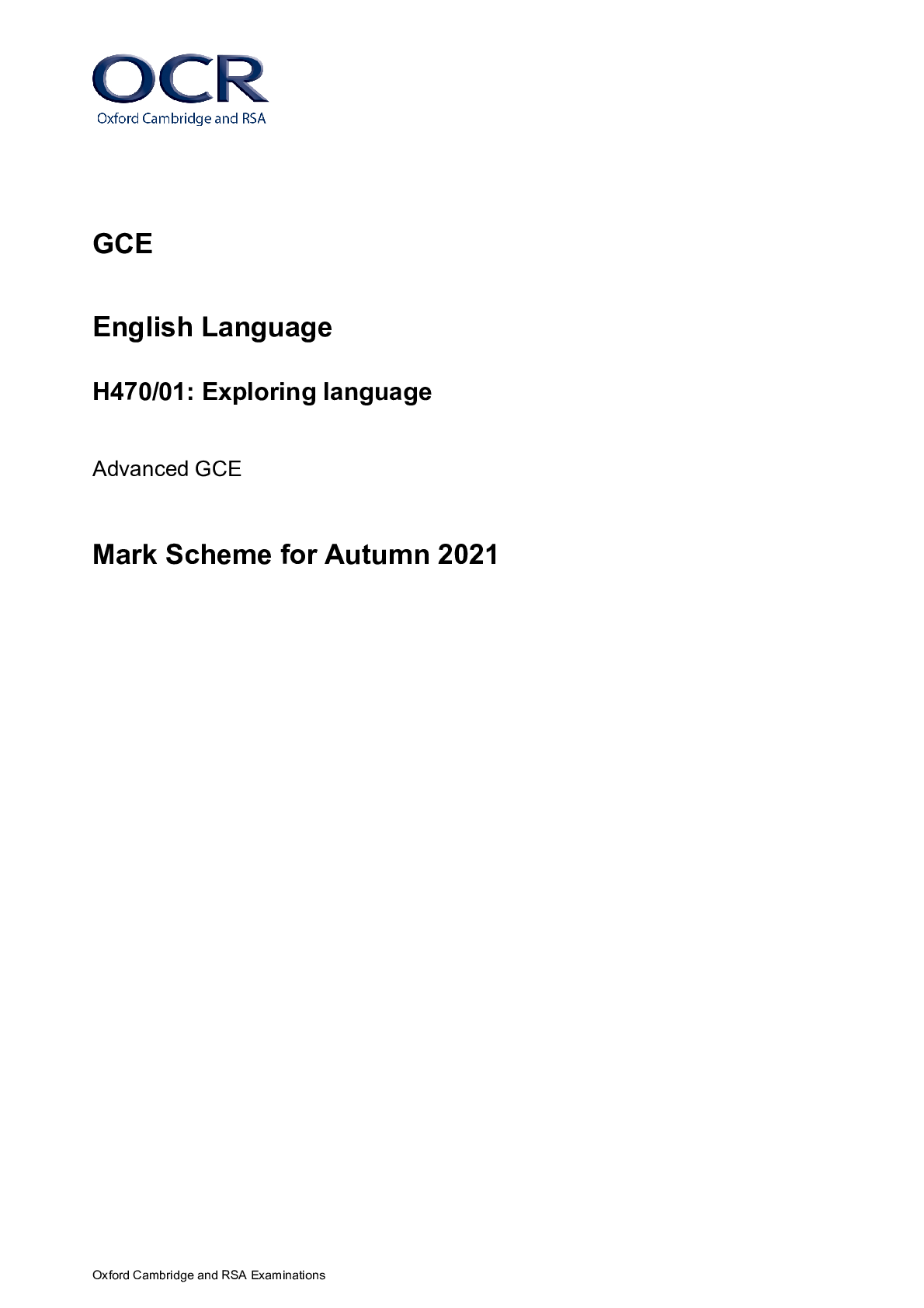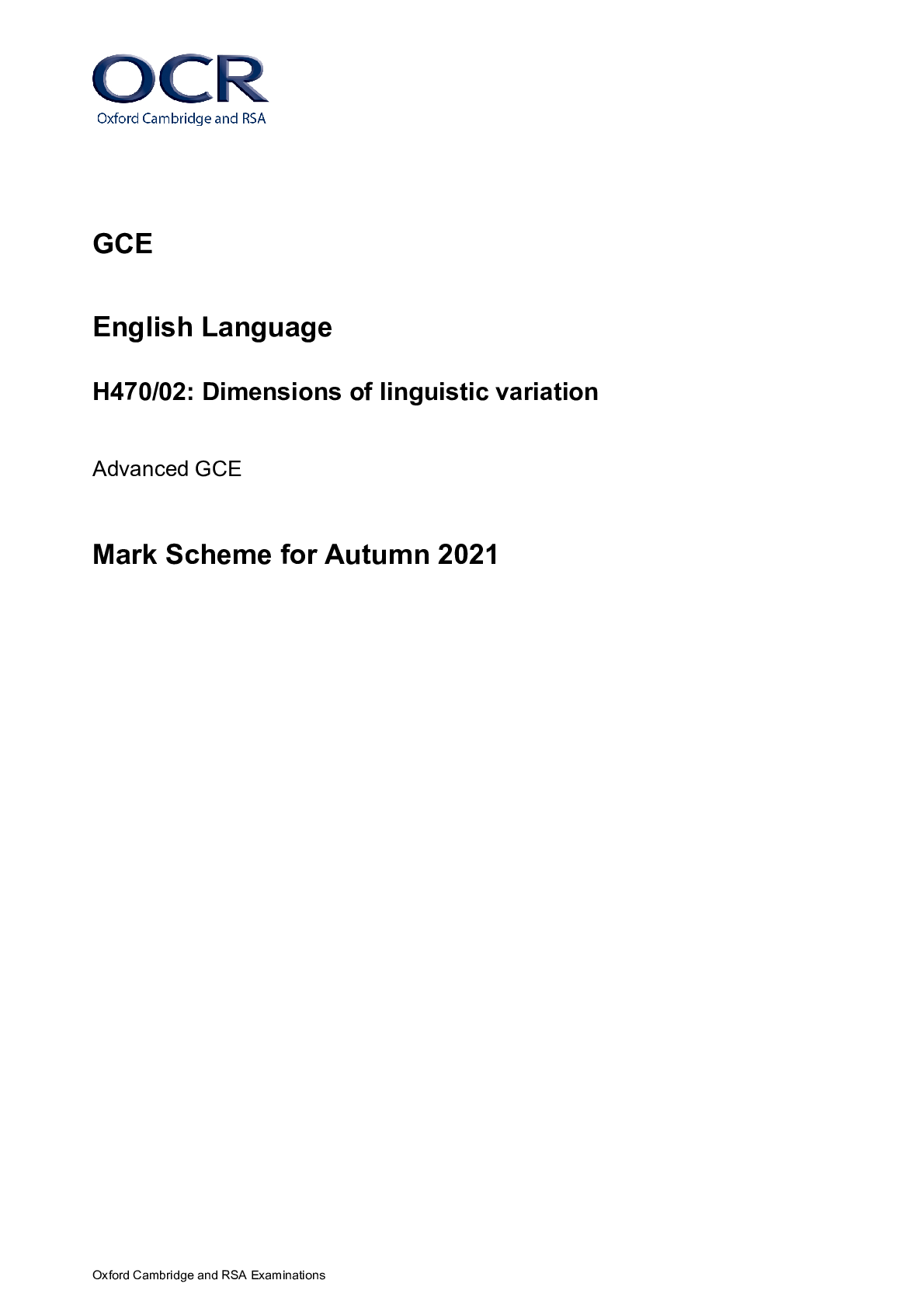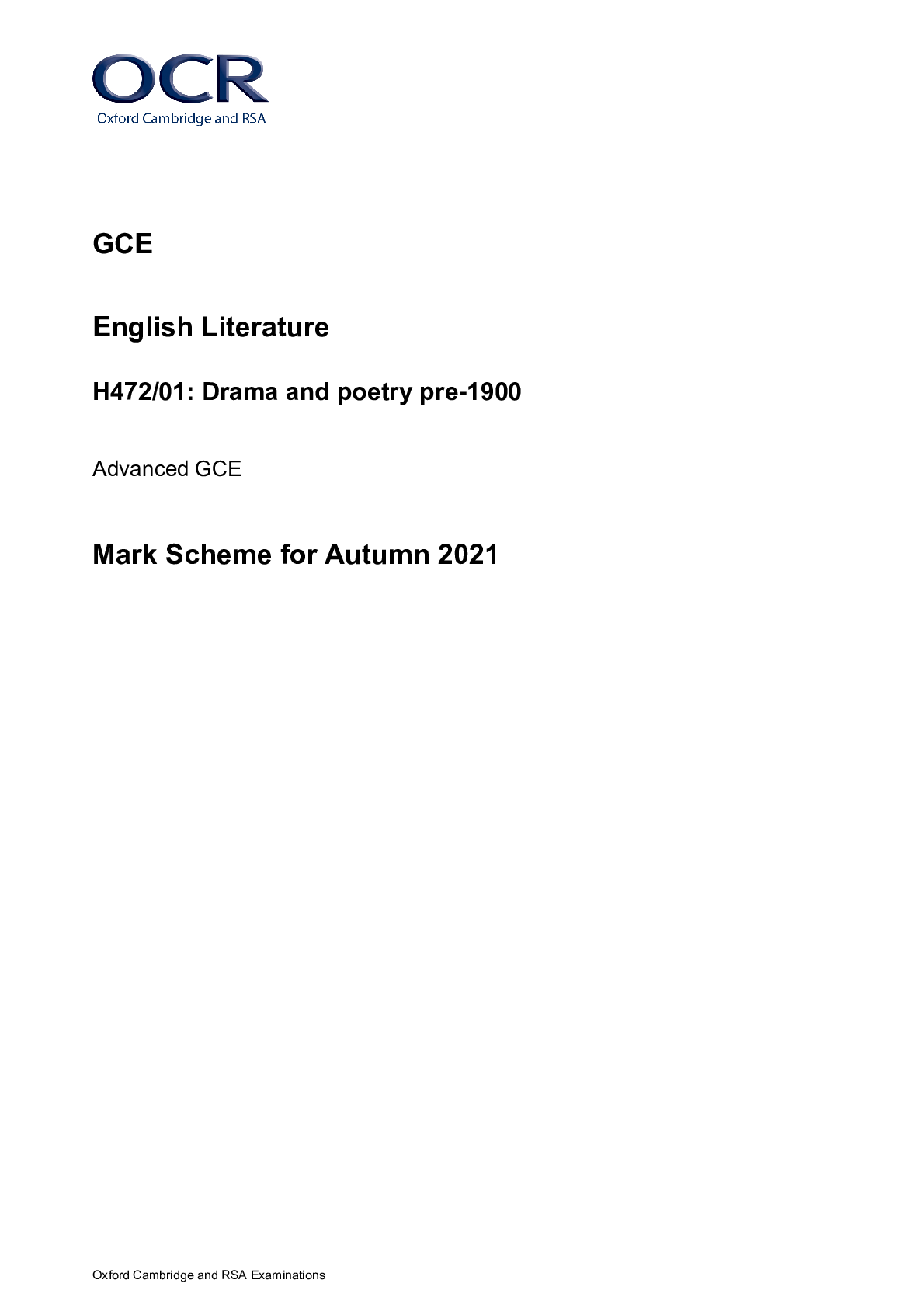Law > A/As Level Mark Scheme > GCE Law H415/02: Law making and the law of tort Advanced GCE Mark Scheme for Autumn 2021. 100% Accur (All)
GCE Law H415/02: Law making and the law of tort Advanced GCE Mark Scheme for Autumn 2021. 100% Accurate, Download to score A+
Document Content and Description Below
Describe the purposive approach to statutory interpretation using cases to illustrate your answer. Answers may include: • Explain that the purposive approach seeks to give effect to the general ... intention and spirit of the statute as opposed to the literal meaning of the word(s) • In Maunsell v Ollins (1975) Lord Simons suggested a two-tier test: the judge is to look to the purpose of the legislation and then must look at the words and interpret them according to the purpose • Identify that the purposive approach takes a broader approach than the mischief rule in that the court is not just looking to see what the gap was in the old law, the judges are deciding what they believe Parliament is trying to achieve – what is the purpose of the Act? • Explain that judges are required to consider the broader context in which the law was created – what were the concerns of government and Parliament at the time the Act was created? • Recognise the need for judges to refer to external aids such as Hansard – Pepper v Hart • Describe how this rule has been used increasingly in recent years as a result of its links to a more continental approach to interpretation associated with the EU and the ECHR • Describe the perceived unconstitutional nature of the rule • Use any relevant cases to illustrate its use – Coltman v Bibby Tankers, Fitzpatrick v Sterling Housing Association, R v Registrar General ex parte Smith, Jones v Tower Boot, Ghaidan v Mendoza, R v Secretary of State for Health ex parte Quintavalle, Pickstone v Freemans plc Credit any other relevant point(s). 10 AO1 Use Levels of Response criteria Level 4 (9–10 marks) Excellent knowledge and understanding of the English legal system, rules and principles. The response is accurate, fully developed and detailed. There will be excellent citation of fully relevant statutes and case law. Level 3 (6–8 marks) Good knowledge and understanding of the English legal system, rules and principles. The response is detailed, but not fully developed in places. There will be good citation of mostly relevant statutes and case law. Level 2 (3–5 marks) Basic knowledge and understanding of the English legal system, rules and principles. The response may lack detail in places and is partially developed. There will be some reference to statutes and case law. Level 1 (1–2 marks) Limited knowledge and understanding of the English legal system, rules and principles. The response will have minimal detail. Citation of statutes and case law is limited. Level 0 (0 marks) No response or no response worthy of credit.H415/02 Mark Scheme October 2021 5 2 Describe the legislative process in the House of Commons for a Bill which commences there. Answers may include: Describe the stages of the legislative process following introduction of the Bill: • First Reading - a formality – the short title of the Bill is read out and an order for the Bill to be printed • Second Reading - this represents the main debate on the Bill. The Minister or MP responsible describes the aims of the Bill and will field questions. There is a formal debate conducted via the Speaker. At the end of the debate a vote will be taken, and a majority will be required in order for the Bill to proceed • Committee Stage - this stage allows for the detailed scrutiny of the Bill. Most Bills are considered by small Committees of between 15 to 60 MPs known as Public Bill Committees. Membership of these committees is always roughly in proportion to the number of seats a Party holds in the Commons. Members will often be chosen because of expertise or interest in a particular field. A separate committee is formed for the consideration of each individual Bill. The committee are entitled to scrutinise every detail and make any amendments necessary for the Bill to reflect the intention discussed in second reading • Report Stage - after scrutiny by the Committee they will ‘report’ back to Parliament - to inform the House of any amendments (if there are no amendments at Committee Stage the Bill can go straight to the next stage). Amendments will be debated and voted on and either accepted or rejected. Further amendments may also be suggested from the House • Third Reading - if approved, the Bill will get its Third Reading. This gives [Show More]
Last updated: 1 year ago
Preview 1 out of 24 pages
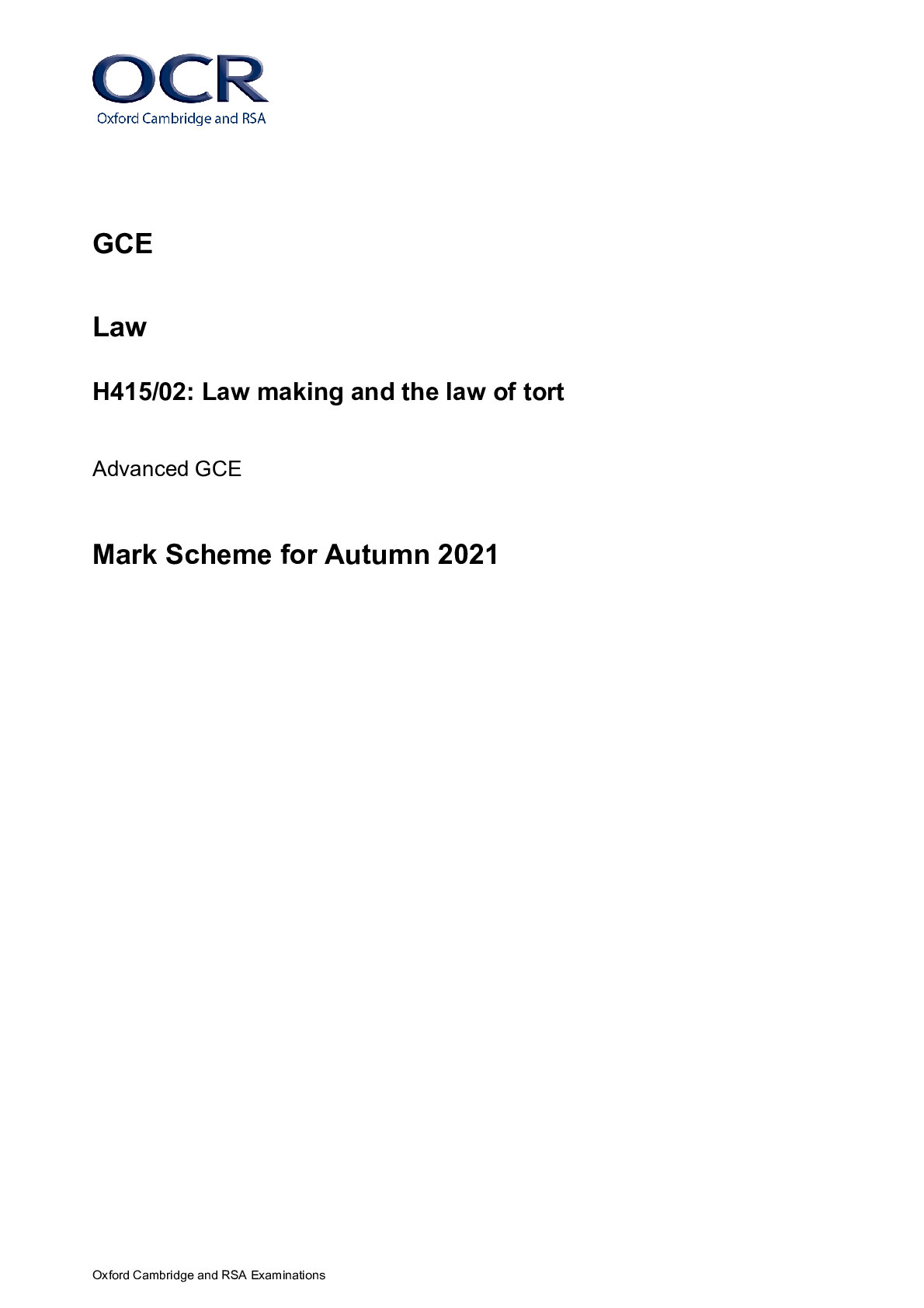
Reviews( 0 )
Document information
Connected school, study & course
About the document
Uploaded On
Jun 28, 2022
Number of pages
24
Written in
Additional information
This document has been written for:
Uploaded
Jun 28, 2022
Downloads
0
Views
114

